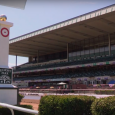There have been some bombs to win the Kentucky Derby and Belmont Stakes. Saturday, Country House became the second-highest-paying horse to win the Kentucky Derby at 65-1. The same has not been true of the Preakness.
Looking at the history of favorites in each leg of the Triple Crown tells a story. Historically the Kentucky Derby has produced the lowest percentage of winning favorites (35.9 percent) — this despite the fact that six of the last seven renewals have been won by the favorite. The Belmont Stakes has only a slightly higher win percentage at 41.9 percent, while nearly half of all Preakness Stakes have been won by the favorite.
Triple Crown Favorites
In all three races, the more recent trend (since 1967) is that fewer favorites have been winning. This is the most evident in the Belmont Stakes with a drop of 13% while both the Kentucky Derby and Preakness are showing a roughly 6% decline in winning favorites.
Recent Triple Crown Favorites
What Is the Biggest Upset in Preakness History?
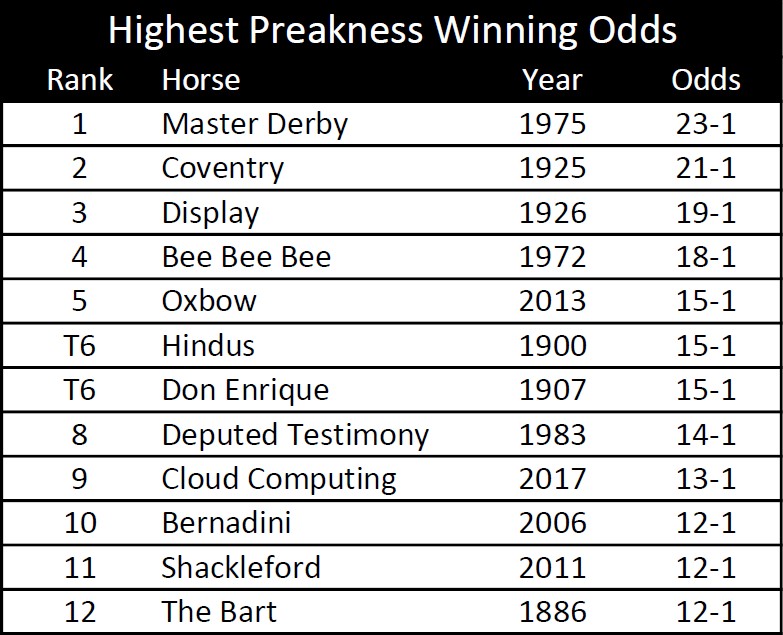
In 1975, Master Derby won the Preakness at 23-1. This wouldn’t hit the top 10 of longest odds on a winner in the Kentucky Derby and would only notch as the ninth longest odds on a winner in the Belmont Stakes, as you can see from the charts below. Only one other horse has won the Preakness at odds higher than 20-1; Coventry in 1925 at 21-1.
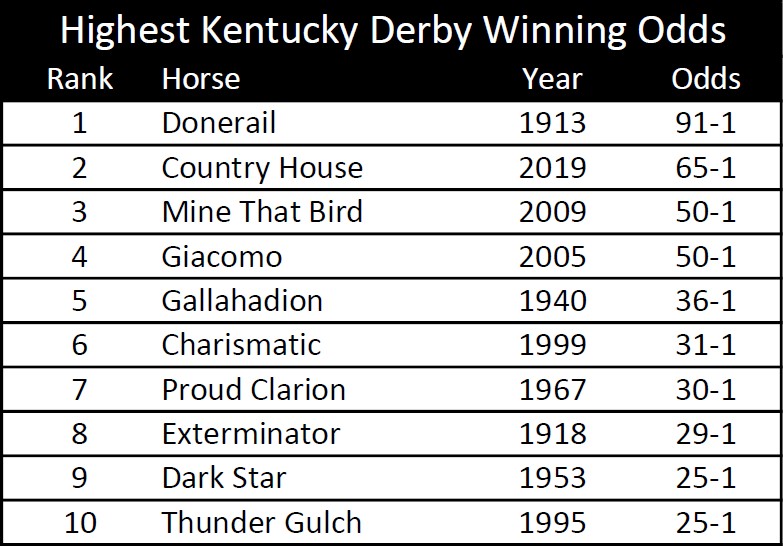
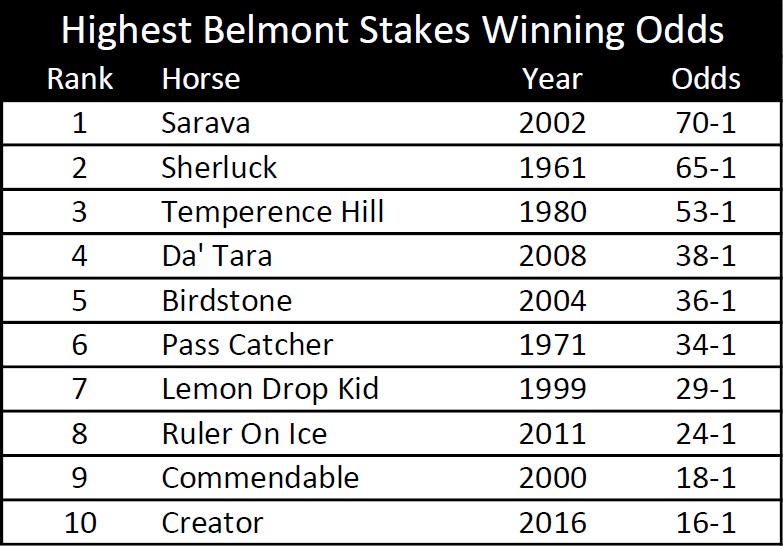
What is interesting to note is that all but one of the top 10 Belmont Stakes upsets have occurred since 1967. There have been more high-priced longshot winners there in recent history than in the other two races.
Why do more favorites win the Preakness than the Kentucky Derby or Belmont Stakes?
Average Field Size
This is the case between the Preakness and Kentucky Derby. Less horses in a race equates to less traffic or chaos. In the last 11 Kentucky Derbies, nearly 44% of all runners have encountered some sort of troubled trip. When you average about 19.5 starters over this period of time you are bound to encounter some sort of trouble.
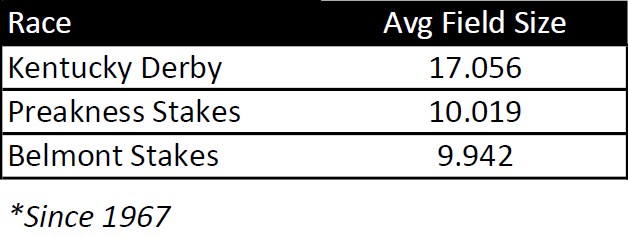
Distance
The Kentucky Derby is 10 furlongs, the Preakness is 9.5 furlongs, and the Belmont Stakes is 12 furlongs. By the time a horse gets to the Preakness it has likely run at least nine furlongs, even if it didn’t start in the Kentucky Derby. That extra half-furlong isn’t a huge leap to make. Having to go 12 furlongs, though, is going to be a huge test of a horse’s stamina.
Horses starting in the Kentucky Derby may have only run a race at nine furlongs or eight and half furlongs. This is still a challenge for many to see if they can handle the added distance.
Field Quality
Unlike the Kentucky Derby, there is no qualification process to earn a spot in the Preakness. Many local minor stakes heroes will try to be the “new shooter” that takes down the Kentucky Derby winner. Many of these horses are outclassed, which makes the betting choices a little easier.
The Belmont Stakes attracts horses that have either rested or have prepped since the Kentucky Derby and show more class than the Preakness “new shooters”.
This is not to say that money can’t be made betting the Preakness. Even when American Pharoah romped home by seven lengths at 1-2 in 2015, Tale of Verve placed at 28-1 with Divining Rod in third at 12-1. The $1 exacta returned $62.20 and the $1 trifecta returned $492.50. In 2018 Justify won at 2-5, but Bravazo and Tenfold finished in the money at 15-1 and 26-1 respectively. The $1 exacta may have only returned $13.70, but the $1 trifecta was a reasonable $148.30.
So whether you are a casual bettor or you make your living playing the races, there is money to be won at the Preakness, even if the favorite wins.




